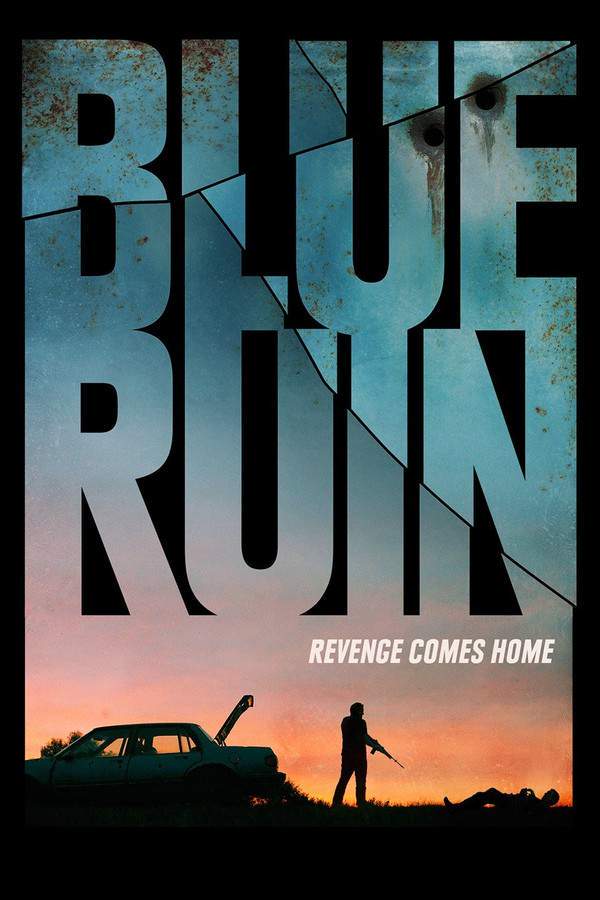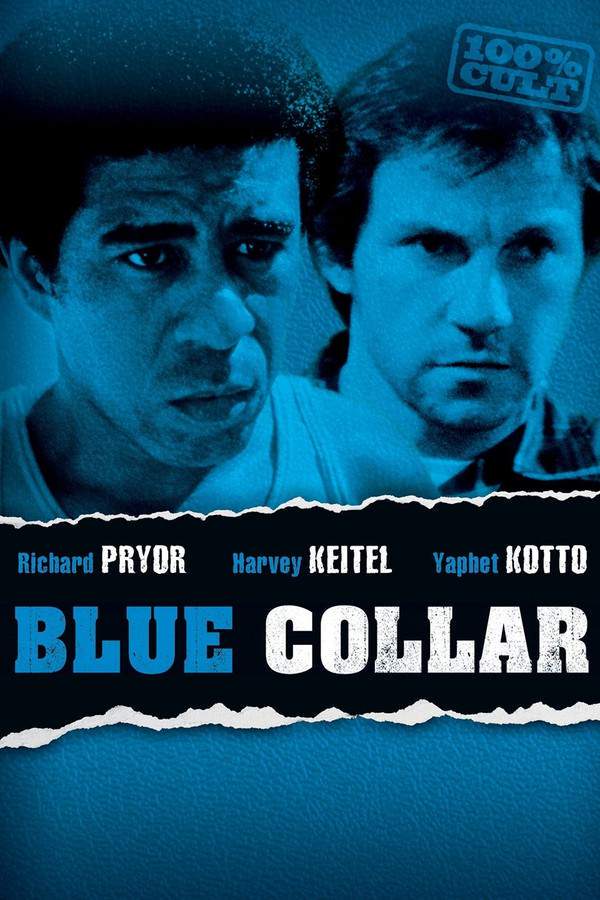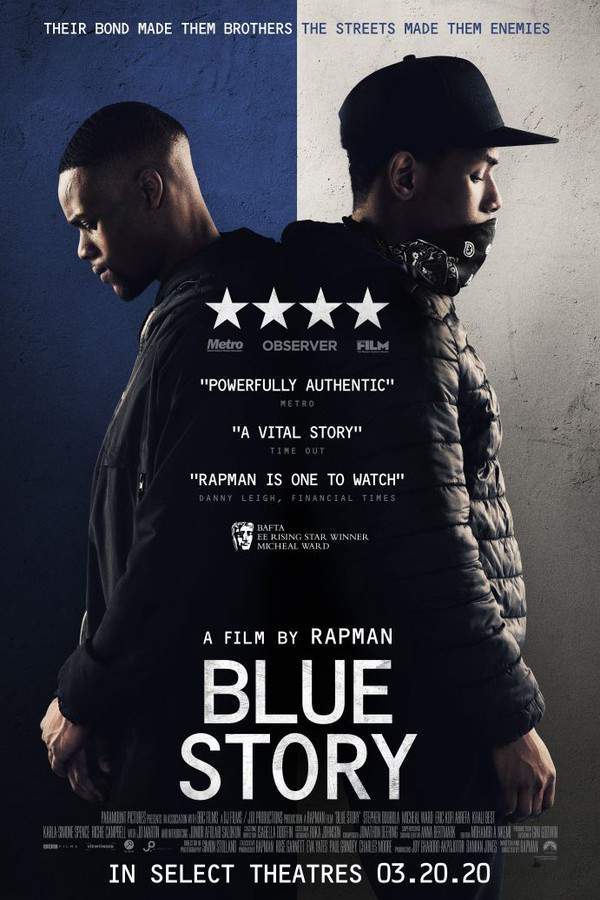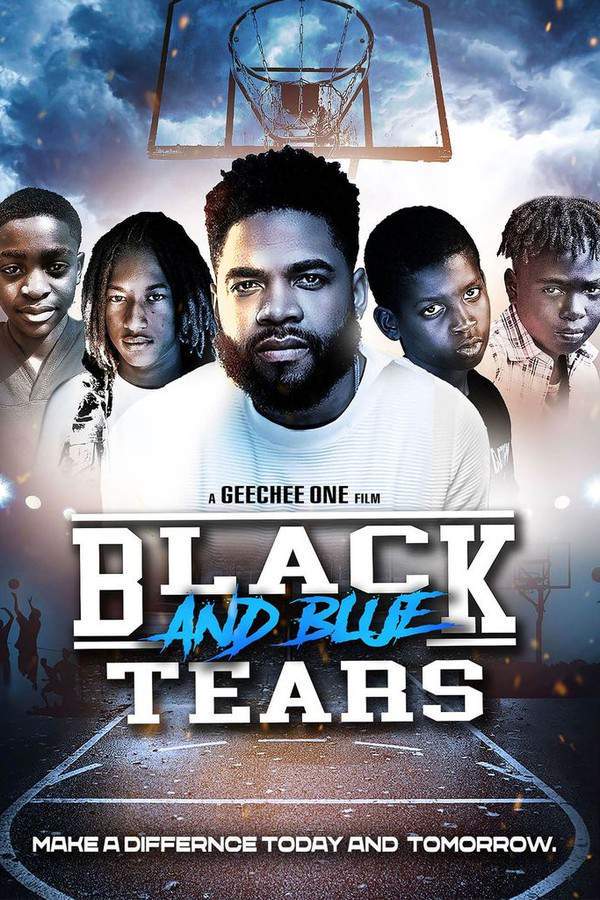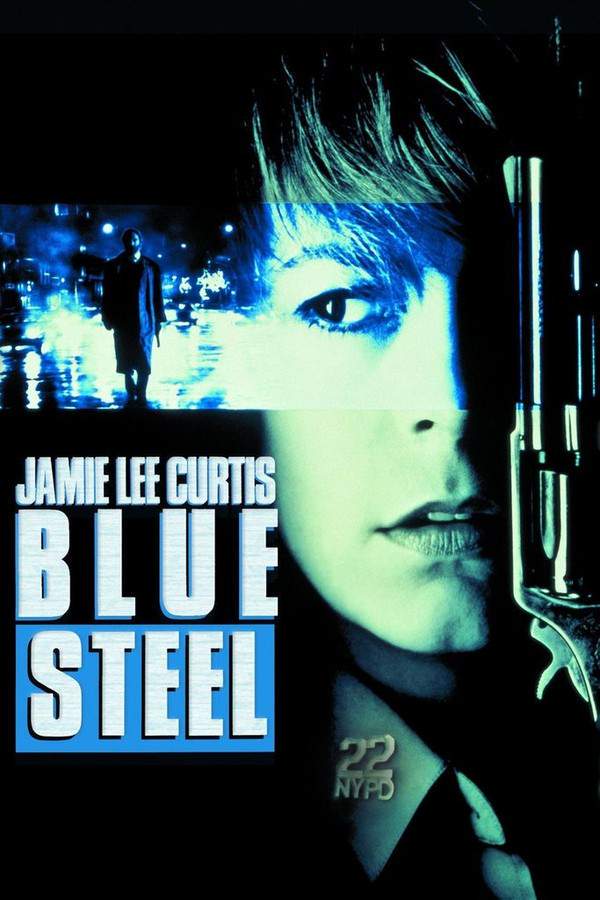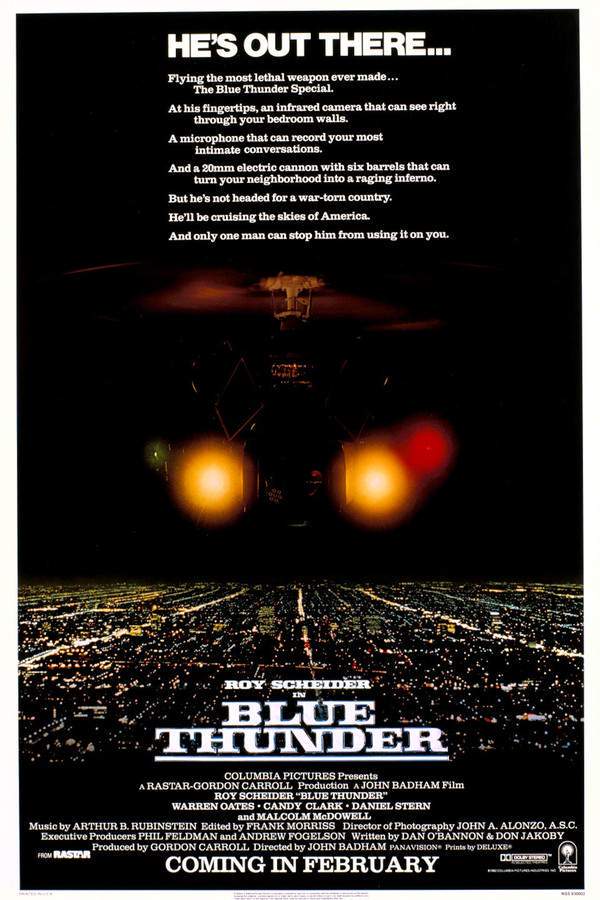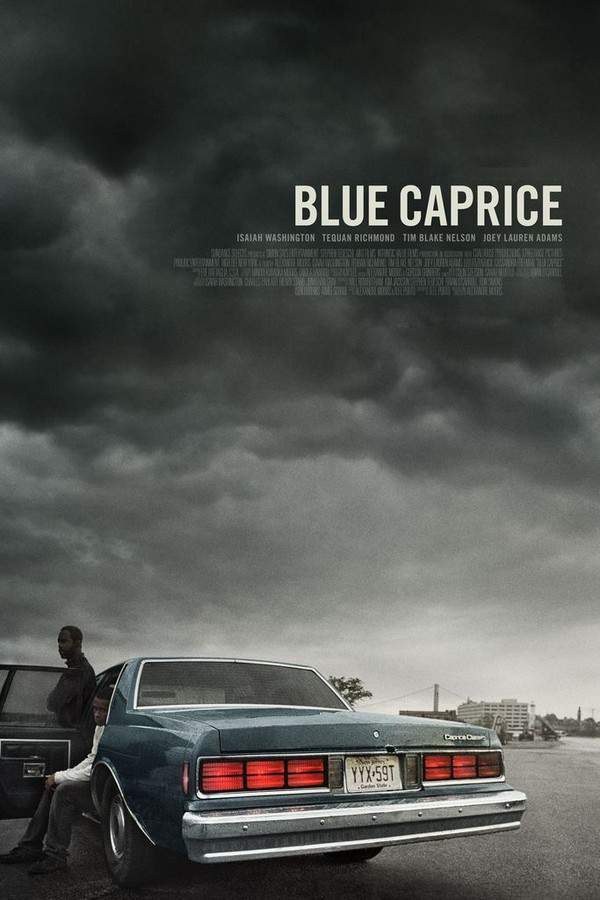
Blue Caprice 2013
Directed by

Alexandre Moors
Made by

Sundance Selects
Test your knowledge of Blue Caprice with our quiz!
Blue Caprice Plot Summary
Read the complete plot summary and ending explained for Blue Caprice (2013). From turning points to emotional moments, uncover what really happened and why it matters.
Lee, a teenager who relocates from Antigua to the United States on his own due to his mother’s work commitments, finds a new father figure in John. Living in Tacoma, Washington, alongside John’s girlfriend Angela, Lee becomes increasingly integrated into John’s family, which includes his three children: one daughter and two sons. Their bond deepens after John introduces Lee to his friend Ray during a jogging session, which leads to Ray introducing Lee to firearms. Much to John’s surprise, Lee’s talent as a marksman becomes evident.
As John’s life becomes increasingly strained due to a restraining order preventing him from contacting his children in Maryland, tensions rise with Angela, resulting in her throwing both John and Lee out of her home. They find refuge with Ray and his family, where Lee stumbles upon a hidden stockpile of firearms in Ray’s basement.
What follows is an alarming transformation, as John exploits Lee’s vulnerability, pushing him toward a dark path of violence. Lee’s first foray into murder occurs when he shoots a neighbor at point-blank range under John’s encouraging gaze. Each subsequent act of violence becomes a twisted rite of passage, with Lee committing further murders, including that of a pub owner, for the sake of repaying John’s perceived debts.
In a chilling turn of events, John and Lee embark on a month-long campaign of terror in Washington, D.C. Armed with a Bushmaster XM-15 rifle, Lee shoots randomly at victims from the trunk of a dark blue Chevrolet Caprice Classic—a car they procured using stolen money. For two weeks, fear grips the city as the pair’s actions lead to widespread panic, prompting a serious investigation from both the Montgomery County Police and the FBI.
Their crime spree reaches its climax when they are finally cornered by law enforcement while parked illegally. After ten harrowing months that result in 17 fatalities and numerous injuries, they are apprehended.
Five months post-capture, Lee finds himself in prison, where a lawyer approaches him to discuss the motivations behind the chilling random killings. However, Lee’s response is unyielding as he queries, > “Where is my father?” before being escorted back to his cell.
Blue Caprice Timeline
Follow the complete movie timeline of Blue Caprice (2013) with every major event in chronological order. Great for understanding complex plots and story progression.
Lee relocates to the U.S.
Lee, a teenager from Antigua, moves to the United States by himself due to his mother's work commitments. This major change marks the beginning of his journey into a new and challenging environment.
Meets John and Angela
Upon arriving in Tacoma, Lee meets John, who becomes a father figure to him, and his girlfriend Angela. This new living arrangement introduces Lee to a family dynamic he has not experienced before.
Introduced to firearms
During a jogging session with John, Lee is introduced to John's friend Ray, who subsequently teaches him about firearms. This moment sets the stage for Lee's unsettling involvement with guns.
Lee’s marksmanship talent revealed
As John encourages Lee to explore shooting, it quickly becomes clear that Lee has an exceptional talent as a marksman. This newfound skill takes a dark turn as it appears to foster a dangerous bond between Lee and John.
John’s turmoil and Angela’s rejection
John faces difficulties due to a restraining order that separates him from his children, which leads to increased tension with Angela. This situation escalates, resulting in Angela throwing both John and Lee out of her home.
Finding refuge with Ray
After being kicked out, John and Lee find refuge with Ray and his family. Lee's life takes a more dangerous turn when he discovers a hidden stockpile of firearms in Ray's basement.
Lee's first murder
Under John's manipulative influence, Lee commits his first murder by shooting a neighbor at point-blank range. This horrifying act marks Lee’s descent into a life of crime and violence.
Escalation of violence
Encouraged by John, Lee continues down a dark path, committing more murders, including that of a pub owner. Each act of violence is twisted into a rite of passage as he feels pressured to repay John's debts.
Campaign of terror begins
John and Lee embark on a month-long campaign of terror in Washington, D.C. Their spree involves Lee shooting randomly at victims from the trunk of a stolen car, contributing to an atmosphere of fear in the city.
Investigation intensifies
As the brutal crimes unfold, the Montgomery County Police and the FBI initiate a serious investigation. The public is gripped by panic, highlighting the urgent need for law enforcement to intervene.
Cornered by law enforcement
After ten months, John and Lee are finally cornered by law enforcement while parked illegally. This moment signifies the end of their crime spree that resulted in 17 fatalities and numerous injuries.
Lee’s imprisonment
Five months after their apprehension, Lee finds himself in prison. He is approached by a lawyer who seeks to understand the motivations behind the killings, which adds to the complexity of his situation.
Lee's haunting question
When questioned by the lawyer about the killings, Lee remains unyielding and instead queries, 'Where is my father?' This reflects his emotional turmoil and desperate need for paternal connection.
Blue Caprice Characters
Explore all characters from Blue Caprice (2013). Get detailed profiles with their roles, arcs, and key relationships explained.
Lee (Tequan Richmond)
Lee is a troubled teenager seeking belonging after moving to the United States. His vulnerability and desire for a father figure make him susceptible to John's toxic influence, leading him down a dark path. As he discovers a talent for violence, he becomes increasingly alienated from any sense of morality.
John (Tim Blake Nelson)
John serves as a paternal figure for Lee, yet he exploits Lee's trust and vulnerability to foster a cycle of violence. His character embodies a flawed and dangerous masculinity, with a focus on power and manipulation. John's transformation from a fatherly figure to an orchestrator of chaos is central to the film's chilling narrative.
Ray
Ray introduces Lee to firearms and becomes a crucial figure in the escalation of violence. He represents the adult influences in Lee's life that contribute to his moral decline. Ray's character serves as a catalyst for Lee's transformation, further intertwining with the themes of mentorship and criminality.
Blue Caprice Settings
Learn where and when Blue Caprice (2013) takes place. Explore the film’s settings, era, and how they shape the narrative.
Time period
Early 2000s
The events of the movie occur in the early 2000s, a time characterized by significant social and political changes in the United States. This period saw heightened tensions surrounding gun control and violence, mirroring the themes of the film as it explores the impact of firearms in society and the psychology of violence.
Location
Tacoma, Washington, Washington, D.C.
The story takes place primarily in Tacoma, Washington, known for its rich cultural history and vibrant community. It then moves to Washington, D.C., the nation's capital, infamous for its political significance and, at this time, the backdrop for a terrifying crime wave. These locales become a stark contrast between the everyday lives of its residents and the chaos introduced by the film's violent events.
Blue Caprice Themes
Discover the main themes in Blue Caprice (2013). Analyze the deeper meanings, emotional layers, and social commentary behind the film.
🔫
Violence
Violence is a central theme in the film, depicting the alarming transformation of a young man shaped by toxic influences. Lee's initiation into this dark world begins with John's encouragement and progresses into a horror-filled journey of crime and moral decay. The film challenges the audience to reflect on the origins of violence and its devastating effects on both individuals and communities.
👨👦
Fatherhood
The complex dynamics of fatherhood play a critical role in the narrative. Lee seeks a paternal figure in John, but rather than guidance, he receives manipulation and encouragement toward violence. This distorted father-son relationship highlights the dark implications of mentorship and the responsibilities that come with such bonds.
🚨
Fear
Fear permeates the narrative, affecting both the characters and the broader community. As Lee and John embark on a spree of random shootings, the palpable tension grips Washington, D.C., leading to widespread panic. This theme emphasizes the broader societal impact of violence and the psychological effects on individuals living in danger.

Coming soon on iOS and Android
The Plot Explained Mobile App
From blockbusters to hidden gems — dive into movie stories anytime, anywhere. Save your favorites, discover plots faster, and never miss a twist again.
Sign up to be the first to know when we launch. Your email stays private — always.
Blue Caprice Spoiler-Free Summary
Discover the spoiler-free summary of Blue Caprice (2013). Get a concise overview without any spoilers.
In a quiet American suburb, a teenage boy arrives far from the island where he grew up, carrying the weight of his mother’s absence and the uncertainty of a new life. Lee is observant, shy, and yearning for a steadier anchor, yet the unfamiliar streets and isolated routines leave him adrift. The town’s modest rhythms mask an undercurrent of restless longing, a place where ordinary surfaces conceal deeper fractures waiting to be tested.
Enter a man who offers the guidance that Lee desperately seeks. John is charismatic and weathered, a figure whose charm masks a darker, more controlling edge. He quickly becomes the surrogate father that Lee has been missing, drawing the teen into his inner circle and sharing a worldview that blurs the line between protection and manipulation. Their relationship is built on a fragile balance of trust and dominance, setting the stage for a tense dance of influence that reshapes both of their identities.
As their bond deepens, the film quietly explores how mentorship can tilt into obsession, and how a vulnerable soul can be coaxed toward paths far beyond the ordinary. The story is soaked in a brooding, almost claustrophobic atmosphere, where everyday settings—kitchen tables, quiet streets, dimly lit rooms—feel charged with unspoken power struggles. The tone remains unflinching, inviting viewers to question how far a single persuasive voice can push someone when the line between guidance and coercion erodes.
The film’s mood is one of simmering dread and uneasy introspection, framed by a minimalist visual style that emphasizes the characters’ internal turmoil over overt spectacle. It asks quietly but persistently whether responsibility lies in the hands of the manipulator, the malleable teen, or the indifferent world that watches their slow descent. The answer, like the story itself, remains just out of reach, leaving a lingering sense of unease that persists long after the credits roll.
Can’t find your movie? Request a summary here.
Movies with Similar Twists and Themes
Uncover films that echo the narrative beats, emotional arcs, or dramatic twists of the one you're exploring. These recommendations are handpicked based on story depth, thematic resonance, and spoiler-worthy moments — perfect for fans who crave more of the same intrigue.
Featured on this page

What's After the Movie?
Not sure whether to stay after the credits? Find out!
Explore Our Movie Platform
New Movie Releases (2026)
Famous Movie Actors
Top Film Production Studios
Movie Plot Summaries & Endings
Major Movie Awards & Winners
Best Concert Films & Music Documentaries
Movie Collections and Curated Lists
© 2026 What's After the Movie. All rights reserved.


